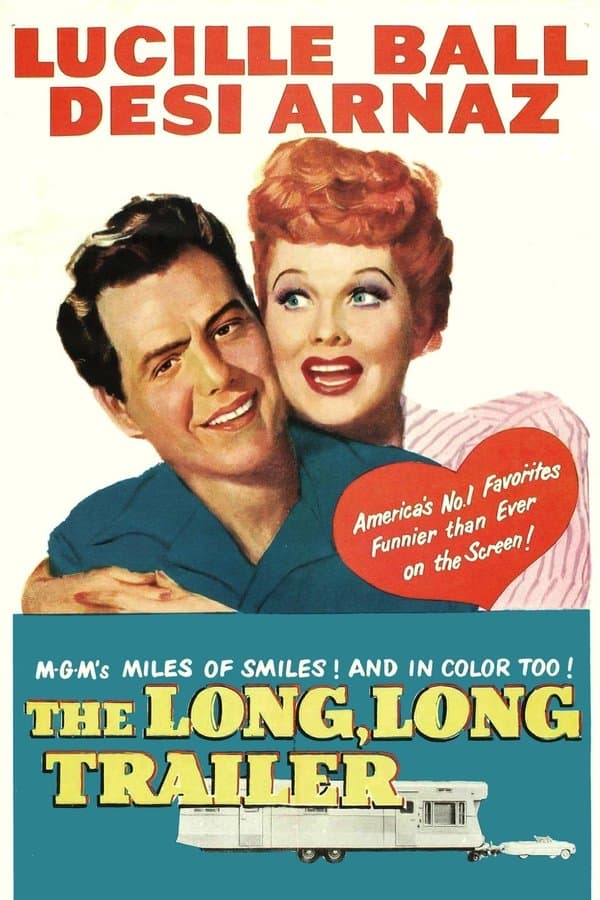
The Long, Long Trailer
1954 • Comedy, Romance • NR
A newly wed couple, Tacy and Nicky, travel in a trailer for their honeymoon. The journey is a humorous one that could end up destroying their marriage.
Runtime: 1h 36m
Why you should read the novel
Before you watch the zany adventures unfold on-screen, consider diving into Clinton Twiss’s delightful book, The Long, Long Trailer. The original memoir offers an authentic, firsthand account, brimming with wit and the author’s own observations about trailer life in mid-century America. Clinton Twiss’s writing gives readers a unique perspective, filled with humor and relatable mishaps that go beyond the cinematic gags.
By reading the book, you’re treated to the unfiltered trials and tribulations that inspired the movie. Unlike the brief runtime of a film, the book delves deeper into the quirky world of full-time trailer living, from practical challenges to the surprising joys found on the open road. The author’s genuine experiences and colorful storytelling paint a richer, more nuanced picture than what’s captured in Hollywood’s adaptation.
If you appreciate the charm of travel narratives and want to understand the roots of the film’s comedic situations, the book is a must-read. You’ll gain a greater appreciation for the challenges—the misadventures and triumphs—that inspired the screenplay, while enjoying the classic, lived-in humor that Clinton Twiss delivers in every chapter.
Adaptation differences
One notable difference between the adaptation and Clinton Twiss’s book is the introduction of fictionalized characters. While the movie centers on the comic chemistry of fictional newlyweds Nicky and Tacy Collini (played by Desi Arnaz and Lucille Ball), the book is actually a nonfiction account of Twiss’s own experiences. The cinematic plot enhances the romance and slapstick oomph by inventing characters and situations that were never a part of the memoir.
In the book, Twiss’s focus is on the reality of trailer travel: the logistics, practical difficulties, and routine discoveries encountered across the American landscape. The film, however, transforms many of these situations into over-the-top comic set pieces, exaggerated for laughs. The famous scene of the trailer struggling up the mountain, for example, is a cinematic invention. Although inspired by Twiss’s anecdotes, it is heightened for comedic suspense and onscreen effect.
Another major difference is the book’s tone. Twiss’s memoir is dry, observational, and laced with understated humor, while the film leans heavily into slapstick and farcical misunderstandings. The movie’s narrative centers primarily on the evolving dynamic between the two leads, making their relationship the comedic focal point, whereas the book discusses broader experiences of trailer ownership and travel.
Finally, the film’s resolution is tailored to audience expectations, offering a feel-good ending that focuses squarely on the couple’s reconciliation. The book, being more autobiographical, leaves some issues unresolved in favor of authenticity. As a result, the adaptation necessarily sacrifices some of the memoir’s nuanced reflections on travel and self-discovery for cinematic pacing and a tightly wrapped conclusion.
The Long, Long Trailer inspired from
The Long, Long Trailer
by Clinton Twiss

